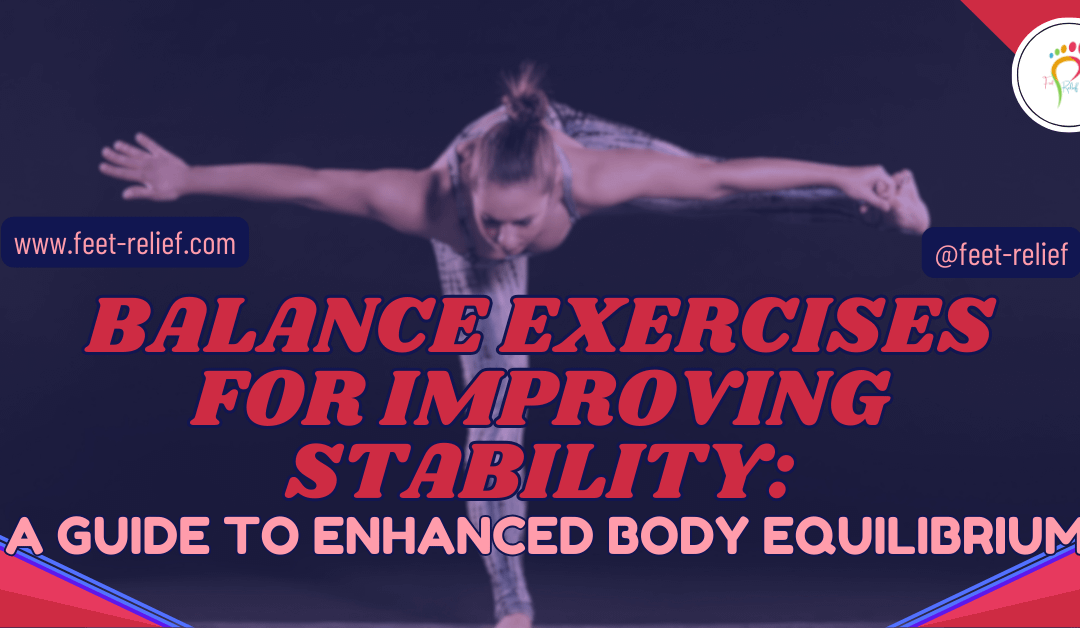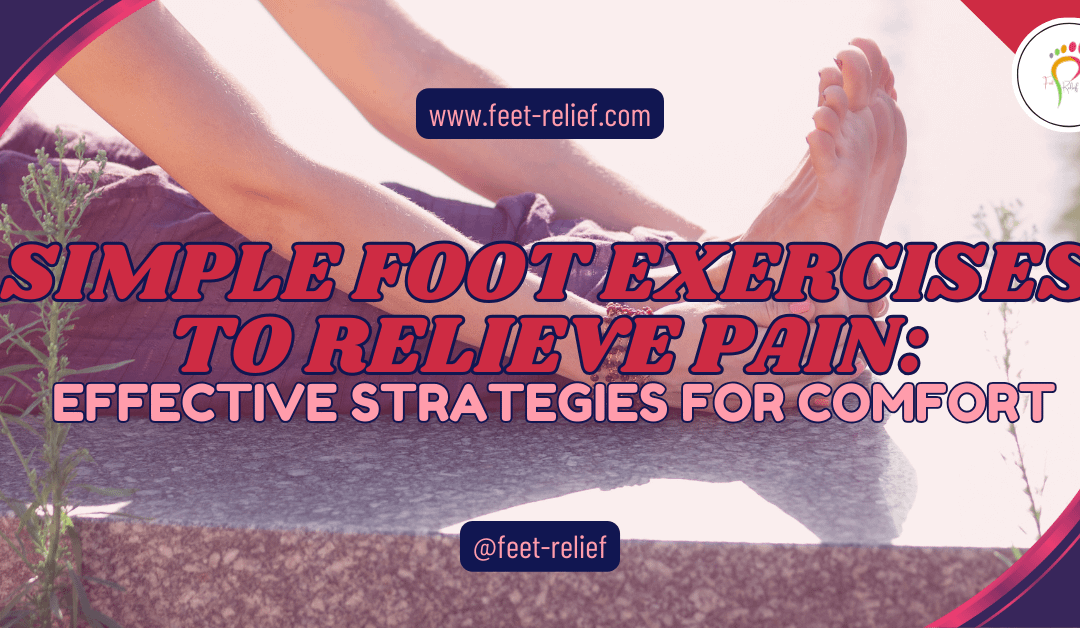
Balance Exercises for Improving Stability: A Guide to Enhanced Body Equilibrium
Have you ever found yourself wobbling a bit more than you’d like, whether reaching for something on a high shelf or navigating a tricky hiking trail? That’s when I realized I needed to try some balance exercises for improving stability. Adding these exercises to my routine has been a real game-changer, making me feel steadier and more coordinated in everything I do.
These simple yet powerful routines have helped me move more confidently and efficiently. If you are someone wanting to feel more stable daily, these balance exercises can definitely make a big difference.
Ultimate Balance Exercises for Improving Stability and Strength
Maintaining good balance is essential for everyday activities and overall physical health. Balance exercises are designed to improve the body’s stability and help prevent falls and injuries while enhancing coordination and strength. Whether you’re an athlete looking to fine-tune your performance, a senior aiming to preserve independence, or somewhere in between, incorporating balance routines into your exercise regimen can provide substantial benefits.

As you prepare to embark on balance exercises, it’s important to start with a solid foundation. Simple activities such as standing on one foot or using a stability ball can lay the groundwork for more advanced exercises. Over time, these exercises can be augmented in complexity to continually challenge your body, aiding in better posture, stronger core muscles, and a heightened sense of bodily awareness. By progressively integrating balance workouts with other forms of training, you can help ensure a well-rounded fitness routine.
Key Takeaways
- Balance exercises enhance stability, prevent falls, and can improve overall athletic performance.
- Starting with fundamental exercises and progressing to more complex ones ensures a safe and effective balance training program.
- Combining balance exercises with other types of training can lead to a more comprehensive fitness routine.
Fundamentals of Balance
Achieving balance is essential for your overall fitness and can prevent falls. It involves maintaining body position over your base of support both statically and dynamically.
Understanding Balance
Balance is your ability to maintain your body’s center of gravity within your base of support. Improved balance can lead to enhanced performance in sports, better posture, and a reduced risk of injury. It is a complex process that your sensory systems, including vision, proprioception, and the vestibular system, all contribute to its regulation.
Components of Balance Training
Balance training usually comprises two primary components: static balance and dynamic balance.
- Static balance refers to maintaining equilibrium when you are stationary, such as standing on one leg.
- Dynamic balance is the ability to remain balanced while in motion, for example, walking or playing sports.
Incorporating exercises such as standing on one foot or performing single-leg deadlifts can greatly enhance these components, providing you with stability and coordination for everyday activities and sports.

Preparation for Balance Exercises
Before starting any balance exercises, it’s important to ensure that you’re well-prepared to reduce any risk of injury and to get the most out of your stability training.
Safety Tips Before Starting
- Consult with a Healthcare Provider: Always check with your healthcare professional to ensure balance exercises are safe for you, particularly if you have underlying health conditions.
- Warm Up: Begin with a 5 to 10-minute warm-up to get your muscles ready for exercise, such as walking or light stretching.
Equipment and Space Requirements
- Footwear: Wear proper footwear that offers good support and non-slip soles.
- Clear Area: Ensure a clear, flat area to work out, removing any potential tripping hazards.
- Stable Support: Have a sturdy chair or railing available for exercises that may require extra support.
Basic Balance Exercises
Balance is a crucial component of fitness, and enhancing it can improve your posture, coordination, and athletic performance. Here, we’ll explore a series of exercises designed to fortify your stability through controlled, targeted movements.

Static Balance Drills
Single-Leg Stand: Start by standing on one foot, holding the position for 30 seconds before switching to the other foot. For an additional challenge, close your eyes or stand on a cushion.
Tree Pose: Root one foot on the ground, press the sole of your other foot to the inner thigh, and balance for 30 to 60 seconds. Swap sides to ensure the development of balance skills is even.
Dynamic Balance Drills
Heel-to-Toe Walk: Take a step by placing the heel of one foot just in front of the toes of the other foot as if walking on a tightrope. Focus on a point ahead and take 20 steps.
Lateral Step-Overs: Set a small object on the ground and practice stepping over it laterally, moving side to side. This exercise combines balance with lateral movement, improving your dynamic stability.
Intermediate Balance Exercises
Engaging in intermediate balance exercises can significantly enhance your stability and proprioception. These drills are designed to challenge your body’s ability to maintain posture and coordination under varied and more demanding conditions.
Proprioception Enhancement Drills
Proprioception is your body’s ability to sense movement and position. It is crucial for everyday tasks and athletic activities alike. To improve this, try exercises like the single-leg balance reach. Stand on one leg, maintaining a slight bend in the knee. Reach forward or to the sides with your free hand, touching a target, such as a cone or a chair. Alternate between your left and right leg for sets of 10-15 touches.
Another effective drill is the BOSU ball squat. Standing on the rounded side of a BOSU ball, with your feet hip-width apart, perform squats while keeping your balance. This exercise forces your core and leg muscles to work overtime to stabilize your body. Aim for two to three sets of 10-12 squats.
Stability Challenges
Stability challenges involve exercises that push your balance to a higher level by adding movement and reducing the base of support. For an elevated challenge, try exercises like the half-moon pose from yoga, which entails balancing on one leg while hinging at the hip, lifting the other leg, and reaching the opposite hand downward.
Incorporate dynamic movement with the standing knee lift. Raise one knee to hip height while maintaining balance on the other foot. Hold the position for about 5 seconds before switching legs. For an extra challenge, add a small hop on the standing leg when switching sides. Perform this exercise for 1-2 minutes, focusing on maintaining a controlled and stable posture throughout the movement.
Advanced Balance Exercises
To advance your stability and coordination, incorporate sophisticated tools and techniques such as balance boards and Bosu balls. These exercises are designed to challenge your balance further, promoting greater strength and proprioception.

Balance Board Routines
Using a balance board is an effective way to enhance your ankle stability and overall balance. Typical routines involve standing on the board with both feet and shifting your weight to keep the board’s edges from touching the ground. This can help improve your core strength and the stabilizing muscles around your ankles.
- Shift & Hold:
- Stand on the balance board, feet hip-width apart.
- Lean to the right, hold for two seconds, then center.
- Repeat to the left.
- Circular Motions:
- Rotate the board in a circular motion, clockwise, then counter-clockwise.
- Maintain an even, controlled motion for 30 seconds each direction.
Bosu Ball Workouts
Bosu Ball exercises provide a dynamic surface to work on your stability and core strength. With the dome side up, the Bosu Ball creates an unstable platform for exercises, increasing the difficulty and engagement of the stabilizing muscles.
- Bosu Squats:
- Stand on the dome side of the Bosu Ball with feet shoulder-width apart.
- Lower into a squat, keeping your balance, then rise back up.
- Bosu Planks:
- Place your forearms on the dome side, extending your legs behind you.
- Hold a plank position, keeping your body in a straight line for 30 to 60 seconds.
Balance Exercises for Specific Populations
Designing a balance training program that caters to the needs of specific populations can maximize the benefits for stability and mobility. Here’s how you can incorporate targeted exercises into your routine if you’re a senior or an athlete.

Exercises for Seniors
Strengthening your balance can help prevent falls and maintain independence. Begin with simple exercises such as standing on one foot or walking heel to toe. These exercises don’t require equipment and can be performed at home with minimal space. Check the detailed guidance provided by Mayo Clinic for more ideas.
- Standing on One Foot: Start by holding onto a sturdy chair for support. Stand on one foot for up to 30 seconds, and then switch to the other foot.
- Walking Heel to Toe: Step forward, placing the heel of your foot directly in front of your other foot’s toes. Repeat this motion as if you are on a tightrope to enhance balance.
Programs for Athletes
Athletes require dynamic balance for optimal performance and reduced injury risk. Incorporating exercises such as single-leg squats and dynamic lunges into your training can be extremely beneficial. For specific exercises tailored to enhance athletic performance, visit Men’s Health.
- Single-leg Squats: While standing on one leg, squat down while keeping the other leg extended out in front. Aim for a set of 10 repetitions on each leg.
- Dynamic Lunges: Perform lunges in various directions – forward, backward, and side to side – to challenge and engage different muscle groups.
By integrating these exercises into your daily regimen, you can achieve improved balance and overall stability tailored to your specific life stage and activity level.
Integrating Balance Workouts with Other Training
Incorporating balance exercises into your existing training regimen enhances stability and can lead to better overall performance. Whether you’re lifting weights or doing cardio, integrating balance-focused movements can offer significant benefits.
Combining Balance and Strength Training
Strength training often focuses on muscle building and power. However, by adding a balance component, you also improve proprioception and stabilize the muscles responsible for keeping you upright. For instance, try performing a single-leg deadlift to engage your core and lower body simultaneously. This exercise not only targets muscle groups but also challenges your balance. Additionally, exercises like Bulgarian split squats can be seamlessly incorporated to provide both strength and balance training, ultimately enhancing your stability.
Incorporating Balance in Cardio Routines
Whilst engaging in cardio exercises, balance can be subtly included to elevate the workout. For example, incorporating a slow knee lift at the end of each lunge during a dynamic warm-up brings balance into play. Another effective approach is to utilize narrow stances or unstable surfaces like a BOSU ball during activities. By integrating balance challenges into your cardio, you can activate different muscle groups and improve neuromuscular coordination, which is beneficial for everyday movement and athletic performance.
Assessing Progress and Adjusting Difficulty
Evaluating your balance exercise routine is crucial to ensure you are continually challenging your body and improving your stability. This assessment involves tracking your progress and knowing when to adjust the difficulty of your exercises.

Tracking Improvements in Stability
To effectively track your stability progress, start by setting a baseline. Record how long you can maintain a balance pose without support and note the difficulty level of balance exercises you perform with ease. Over time, you should observe an increase in the duration you’re able to hold balance positions and a smoother execution of movements. Progress can also be measured by the reduced need for support when doing exercises such as standing on one leg or using a Bosu ball.
Progression and Regression Strategies
Once you track improvements, your workout routine should evolve. Progression means adding complexity to your exercises, like closing your eyes while balancing, adding movement or weights, or shifting to less stable surfaces. However, be mindful of regression, allowing for easier modifications or more support when faced with challenging days. For instance, using a focal point to maintain stability can be a simple yet effective regression strategy if you’re struggling to maintain balance during a workout session.
Did You Know?
David Weck invented the Bosu Ball in 2000. Initially, this name was an acronym for “BOth Sides Up,” wherein one side is a solid flat platform, and the other is a soft dome resembling an exercise ball. These days, the Bosu Brand attaches the meaning “BOth Sides Utilized” to the name.
Recovery and Maintenance
After incorporating balance exercises into your routine, it is crucial to focus on recovery and maintenance to enhance the benefits and reduce the risk of injury.
Cool-Down Stretches after Balance Training
It’s vital to perform cool-down stretches to relax your muscles and prevent stiffness post-balance exercises. Stretches such as hamstring stretches or calf stretches should be held for at least 15-30 seconds to ensure flexibility is maintained. For example, reach your hands toward the floor and hold when your back is parallel to the floor, as highlighted in Balance Improving Exercises for Workouts to Improve Stability.
Ongoing Balance Maintenance
Consistency is key in ongoing balance maintenance. Incorporate single-leg exercises, like a single-leg deadlift, which require you to maintain stability over a prolonged period. A varied routine promotes improvement and adaptation, which can be integrated into daily activities to keep your balance skills sharp. For further advice on integrating balance exercises, consider reviewing suggestions from Verywell Fit.
Transform Your Stability with Balance Exercises

Adding balance exercises for improving stability to my routine has made a world of difference. I’ve gone from feeling unsteady and unsure to confident and coordinated in my everyday movements. Starting with simple exercises like standing on one foot and progressing to more challenging routines on a BOSU ball, I’ve seen significant improvements in my posture, strength, and overall balance. Whether you’re looking to boost your athletic performance or simply stay steady on your feet, these exercises are a game-changer. Give it a try – start with the basics and see how quickly you progress. So, take the first step today and experience the benefits of improved stability for yourself!
Frequently Asked Questions
Balancing exercises are essential for improving stability, and here you’ll find targeted exercises for varying skill levels and ages, incorporating additional resistance, and options for home workouts.
What are the best balance exercises for beginners to enhance stability?
If you’re just starting out, try simple exercises like standing on one foot or doing a series of heel-to-toe walks. These foundational moves help you establish a baseline for your balance and can be performed almost anywhere.
Which exercises can improve balance for seniors effectively?
For seniors, low-impact exercises such as tai chi can be particularly beneficial. They promote stability and coordination and can also reduce the risk of falls.
How can incorporating weights into a balance routine increase stability?
Adding weights to your balance routine, like doing a single-leg deadlift with a dumbbell, challenges your muscles further and helps to strengthen the core and leg muscles that are critical for good balance.
What are some effective balance exercises that can be done at home?
Exercises that don’t require special equipment, such as side planks or single-leg standing exercises, can easily be done in the comfort of your home and are effective for improving balance.
What is the most effective training method for improving balance and stability?
Consistency is key in balance training. Incorporate balance exercises into your daily routine, whether it’s through a structured workout or simply standing on one leg while brushing your teeth.
What strategies can be used to correct or improve poor balance?
Begin with basic exercises and gradually increase difficulty as your balance improves. Ensure your workout space is safe, use supports like a chair when necessary, and focus on maintaining good posture throughout the exercises.
Discover Your Balance with Expert Tips at feet-relief.com!
Ready to enhance your stability and overall well-being? Visit our official website at feet-relief.com for expert tips, comprehensive guides, and the best tools to support your balance exercises. Discover how you can do so today!
Find Out More














































